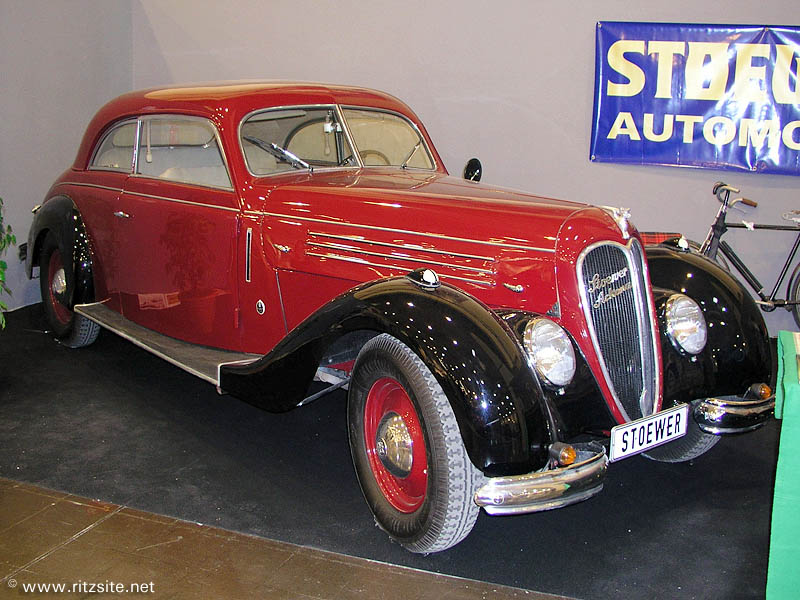|

Stoewer Arkona - coupe body by Gläser - manufactured in 1939
Not many people will have heard of Stoewer, a German car manufacturer located in Stettin, a Baltic port in the upper North-East of pre-war Germany. Still, far away from the better known industrial areas of Germany, Stoewer produced over 35,000 cars from 1899 till the end of the company in 1945. Stoewer cars were generally of high quality and well-respected, and mostly in the middle-class range though their 8-cylinder models from the late 1920s and early 1930s rivalled those of upper-class manufacturer Horch. The bodies were stylish, the chassis and engines often of innovative designs and yet Stoewer never managed to amass enough funds to get efficient mass-production off the ground and to get beyond regional acclaim and importance.
This became very apparent during the early 1930s when Stoewer had a hard time surviving the economic crisis. The city of Stettin acquired most of the stock to ensure employment and the founding Stoewer family, responsible for most of the technical developments, was ousted in 1934. The last new range of Stoewer private cars was developed by Karl Trefz, a competent manager though his experience was largely in the field of industrial vehicles. Much to the surprise of the motoring world, who had about given up on Stoewer, he introduced the twin model range Sedina and Arkona in 1937.
The Sedina and Arkona were middle-class cars of similar appearance and of rational and durable construction. They showed little of the usual Stoewer finesse and style but were practical and economical. The models competed with those of Opel and Wanderer and could have been successful if not for their price tag, which was considerably higher than that of the competition. This lead to slow sales, and only 924 Sedinas and 201 Arkonas were produced up to 1940.
Though most parts of the two models were interchangeable there was a notable difference: the smaller Sedina was powered by a 2406 cc 4-cylinder engine while the larger Arkona had a straight 6-cylinder engine of 3610 cc producing 80 hp @ 3200 rpm. This made the Arkona a relatively rapid car with a top speed of 140 kph, compared to the 110 kph of the Sedina. The Arkona could be had in a number of different body-styles like a 6-window sedan, a 4-window convertible, a 2-seater "sport-cabriolet" and a longer and heavier "Pullman-Limousine" which was not very attractive and aimed at the taxi-market. The Arkona was also available as a chassis only, which could be bodied by a specialist coachbuilder. A good example of that is the attractive Arkona coupe shown this month, with a body made by Gläser from Dresden in Germany, one of the most renown German coachbuilders from that era and best known for producing cabriolet bodies for Auto Union makes like Horch and Wanderer.
The disappointing sales of the Sedina and Arkona didn't mean the end for Stoewer as it survived another 5 years by making a 4-wheel drive command car for the German army named the Type 40 or LEPKW. No, Stoewer endured a much more humiliating end at the conclusion of the second World War, when Stettin became Polish territory and all production machinery was removed from the factory and disappeared. Later the factory was used for motorcycle production and then for the production of parts for the Polski-Fiat. The Stoewer name never featured on a vehicle again.
Today, about 200 Stoewer cars have survived in the hands of enthusiasts, mostly in Germany. A few Arkonas are also still around, mostly open models, which makes this closed coupe extra unique. Outside Germany Stoewers are very rare to encounter, but if you do then remember the almost forgotten fine cars produced at this unusual place near the Baltic sea.
If you want to know more about Stoewer you can visit the site of the Stoewer Museum.
© André Ritzinger, Amsterdam, Holland
|
